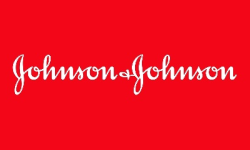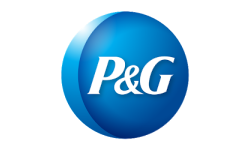
Global Probiotics Market by End Use (Animal, Human), by Ingredient (Bacteria, Yeast), by Product (Dietary Supplements, Food & Beverages) and Region (North America, Latin America, Europe, Asia Pacific and Middle East & Africa), Forecast To 2028
Summary of the Report
Global probiotics market was valued at USD 54.77 Billion in 2020. It is expected to increase at a compound annual rate (CAGR of 7.2%) between 2021 and 2028. This is due to the increasing consumer preference for preventive healthcare and the efficient development of probiotic strains. When taken in sufficient amounts, probiotics have beneficial effects on the body. They can improve gut health and reduce intestinal inflammation. Because they strengthen the immune system, probiotics can help prevent the development of disease. Market growth is expected to increase due to increased awareness about preventive healthcare.
Preventive healthcare is about a healthy lifestyle that includes healthy dietary choices and lifestyle choices that prevent the occurrence or recurrence of disease. There are many factors that contribute to the increase in awareness about preventive healthcare, including the increasing disposable income and the rising standard of living as well as the growing number of people who are older. The easy availability of information regarding preventive healthcare via the internet is another factor that has contributed to this rising awareness.
The U.S. market is characterised by the availability of probiotics that are specific to certain demographics. Regional players have the opportunity to use these niche markets to expand their product range and maximize their resources. The U.S. market will be driven by an increased demand for probiotic-based foods and beverages as well as dietary supplement products in the coming years.
The U.S. regulations regarding the use of probiotics (in nutraceuticals, nutritional supplements, and infant formulas) are very strict and will pose a challenge to regional market players. The result has been stagnant innovation in probiotic products designed for baby boomers. However, the country saw the launch of 204 adult probiotic-based products in 2016.
A huge increase in the demand for immune-boosting foods and supplements was caused by the COVID-19 pandemic. Probiotics are known for their immune-boosting properties. They provide strong protection against gastrointestinal pathogens as well as promoting the production of natural antibody in the body.
According to a survey by Natural Marketing Institute, probiotic consumption saw an exponential rise in 2020. According to the survey, 66% of Americans took probiotics in 2020, while 188% experienced an increase in users in Italy, China saw a 108% increase in probiotic use in May 2020 compared with the previous six months. The market's growth was aided by the rapid rise in probiotic users in 2020.
Product Insights
With a market share of over 79%, the probiotic food and beverages segment led in global markets in 2020. The market can be divided into three segments based on product: probiotic food and beverages, probiotic diet supplements, or animal feed probiotics. Food & beverages can be further divided into dry, wet, dairy, gluten-free, cereals, baked foods, fermented food, and non-dairy. The dietary supplement can be further broken down into nutritional supplements, infant formula, and food supplements.
To increase the nutritional value and flavor of baked goods, probiotics are added. There are many new products on the market, including probiotic muffins and nutritional bars. These probiotic-infused baked goods have seen a rise in popularity due to rising interest in preventive healthcare.
Consumers are increasingly looking for natural remedies to various health issues and probiotic dietary supplements are becoming more popular. Probiotics are an alternative to pharmaceutical solutions. They can be used to treat a wide range of conditions including gastrointestinal problems, gut health, and immune strengthening. This growth will be further aided by the development of novel delivery methods such as chewable and fizzy powders as well as chewable products.
Ingredient Insights
With a revenue share greater than 84%, the bacteria segment led global markets in 2020. The market can be divided by ingredient into yeast and bacteria. The bacteria segment can be further divided into lactobacilli and Bifidobacterium as well as streptococcus and other. While yeast can be classified into Saccharomyces Boulardii and others. Probiotics tend to be primarily bacterial, with lactobacillus and lactic acid bacteria being the most common. These ingredients are most commonly used in fermented foods like yogurt, sauerkraut and kimchi. Another important application area for bacterial ingredients is dietary supplements.
Many biological activities are associated with yeast-based probiotics, making them suitable for use in many other areas than the food industry. In addition to their role in fermented foods that allow for flavor innovation, yeast-based probiotic ingredients also help improve the productivity and health growth and lactation animals. Saccharomyces Boulardii, the most widely used yeast type (ingredient), is a result of its healing properties to withstand harsh stomach acids and pancreatic juices.
Distribution Channel Insights
The hypermarket/supermarket segment led the global market in 2020 with a revenue share of more than 31%. On the basis of distribution channel, the market has been broadly classified into four categories, namely, hypermarkets/supermarkets, pharmacies/drugstores, specialty stores, and online stores. Supermarkets/hypermarkets are a popular channel for the purchase of protein-based supplement products due to the convenience of shopping and the availability of multiple brands. This segment will see a significant increase in sales over the forecast period. Due to the wide range of probiotic products available, consumers who shop in these channels will likely be more selective.
Probiotics can also be purchased online. The changing consumer buying habits has led to an increase in online shopping. Online retail offers convenience, a wider selection, a longer delivery time, and discounts have all influenced consumers' purchasing behavior. The industry has seen a significant increase in pharmacies, fitness centers and other related distribution channels over the years. This trend is expected to continue during the forecast period.
End-use Insights
With a market share of over 91%, the human probiotics segment dominated the global market in 2020. Technological advances in human-grade probiotics have expanded the range of products that are suitable for human consumption. This is due to prominent market players incorporating novel food-grade ingredients into juices and other non milk-based applications. Key players have jumped into the juices market as a result. Ganeden, Inc., an American probiotic ingredient manufacturer, provides probiotic juices for athletes, the elderly, and children.
Researchers have been paying a lot of attention to probiotics in recent years when it comes to animal nutrition. This is due to the growing focus on alternative growth promoters to antibiotics to improve animal health. The growth prospects for the animal probiotics market are expected to improve as a result of bans on antibiotics in different countries.
Regional Insights
Asia Pacific dominated the global market in 2020 with a revenue share exceeding 41.9%. Due to the aggressive strategies of global players, consumers are becoming more aware of the region's potential. The overall growth is being driven by strong demand from countries like India, China, and Australia. Regional market growth will also be supported by a growing population and rising living standards.
The lack of technology in the past caused a flood of probiotics that were unstable at room temperature. Major companies have introduced microencapsulation technologies to improve the quality and stability of probiotic bacteria. The region's growth will be aided by ongoing R&D to develop efficient strains that can withstand high temperatures and offer a wide range of treatment options.
North America is expected to see significant growth during the forecast period. The regional market is expected to grow due to continued investments by manufacturers in the food and beverage, as well as the pharmaceutical industries. Regional players invest in R&D to develop new products that cater to different age groups and genders. These factors will likely accelerate the market's growth over the forecast period.
Market Share Insights & Key Companies
With their well-established distribution channels, the key players are leading the market. These players use a variety of business strategies to withstand competition. One key observation is that key players are increasingly focusing on South East Asian markets due to the existence of a target customer base in the region. These are some of the major players in the global market for probiotics:
-
Arla Foods, Inc.
-
BioGaia, AB
-
Chr. Hansen Holding A/S
-
Danone
-
Danisco A/S
-
General Mills, Inc.
-
i-Health, Inc.
-
Lallemand, Inc.
-
Lifeway Foods, Inc.
-
Mother Dairy Fruit & Vegetable Pvt. Ltd.
-
Kerry
-
Nestle S.A.
-
Probi
-
Yakult Honsha Co., Ltd.
Up Market Research published a new report titled “Probiotics Market research report which is segmented by End Use (Animal, Human), by Ingredient (Bacteria, Yeast), by Product (Dietary Supplements, Food & Beverages), By Players/Companies Arla Foods, Inc; Lallemand Inc; Danone; Nestle; Danisco A/S; BioGaia AB, Inc, Lifeway Foods Inc, Chr Hansen, Mother Dairy Fruit & Vegetable Pvt Ltd, General Mills”. As per the study the market is expected to grow at a CAGR of XX% in the forecast period.
Report Scope
| Report Attributes | Report Details |
| Report Title | Probiotics Market Research Report |
| By End Use | Animal, Human |
| By Ingredient | Bacteria, Yeast |
| By Product | Dietary Supplements, Food & Beverages |
| By Companies | Arla Foods, Inc; Lallemand Inc; Danone; Nestle; Danisco A/S; BioGaia AB, Inc, Lifeway Foods Inc, Chr Hansen, Mother Dairy Fruit & Vegetable Pvt Ltd, General Mills |
| Regions Covered | North America, Europe, APAC, Latin America, MEA |
| Base Year | 2020 |
| Historical Year | 2018 to 2019 (Data from 2010 can be provided as per availability) |
| Forecast Year | 2028 |
| Number of Pages | 248 |
| Number of Tables & Figures | 174 |
| Customization Available | Yes, the report can be customized as per your need. |
The report covers comprehensive data on emerging trends, market drivers, growth opportunities, and restraints that can change the market dynamics of the industry. It provides an in-depth analysis of the market segments which include products, applications, and competitor analysis.

Global Probiotics Market Report Segments:
The market is segmented by End Use (Animal, Human), by Ingredient (Bacteria, Yeast), by Product (Dietary Supplements, Food & Beverages).
Probiotics Market research report delivers a close watch on leading competitors with strategic analysis, micro and macro market trend and scenarios, pricing analysis and a holistic overview of the market situations in the forecast period. It is a professional and a detailed report focusing on primary and secondary drivers, market share, leading segments and geographical analysis. Further, key players, major collaborations, merger & acquisitions along with trending innovation and business policies are reviewed in the report.
Key Benefits for Industry Participants & Stakeholders:
- Industry drivers, restraints, and opportunities covered in the study
- Neutral perspective on the market performance
- Recent industry trends and developments
- Competitive landscape & strategies of key players
- Potential & niche segments and regions exhibiting promising growth covered
- Historical, current, and projected market size, in terms of value
- In-depth analysis of the Probiotics Market
Overview of the regional outlook of the Probiotics Market:
Based on region, the market is segmented into North America, Europe, Asia Pacific, Latin America and Middle East & Africa (MEA). North America region is further bifurcated into countries such as U.S., and Canada. The Europe region is further categorized into U.K., France, Germany, Italy, Spain, Russia, and Rest of Europe. Asia Pacific is further segmented into China, Japan, South Korea, India, Australia, South East Asia, and Rest of Asia Pacific. Latin America region is further segmented into Brazil, Mexico, and Rest of Latin America, and the MEA region is further divided into GCC, Turkey, South Africa, and Rest of MEA.

Highlights of The Probiotics Market Report:
- The market structure and projections for the coming years.
- Drivers, restraints, opportunities, and current trends of Probiotics Market.
- Historical data and forecast.
- Estimations for the forecast period 2028.
- Developments and trends in the market.
1. Animal
2. Human
7. By Ingredient:1. Bacteria
2. Yeast
8. By Product:1. Dietary Supplements
2. Food & Beverages
- Market scenario by region, sub-region, and country.
- Market share of the market players, company profiles, product specifications, SWOT analysis, and competitive landscape.
- Analysis regarding upstream raw materials, downstream demand, and current market dynamics.
- Government Policies, Macro & Micro economic factors are also included in the report.
We have studied the Probiotics Market in 360 degrees via. both primary & secondary research methodologies. This helped us in building an understanding of the current market dynamics, supply-demand gap, pricing trends, product preferences, consumer patterns & so on. The findings were further validated through primary research with industry experts & opinion leaders across countries. The data is further compiled & validated through various market estimation & data validation methodologies. Further, we also have our in-house data forecasting model to predict market growth up to 2028.
How you may use our products:
- Correctly Positioning New Products
- Market Entry Strategies
- Business Expansion Strategies
- Consumer Insights
- Understanding Competition Scenario
- Product & Brand Management
- Channel & Customer Management
- Identifying Appropriate Advertising Appeals

Reasons to Purchase the Probiotics Market Report:
- The report includes a plethora of information such as market dynamics scenario and opportunities during the forecast period
- Segments and sub-segments include quantitative, qualitative, value (USD Million,) and volume (Units Million) data.
- Regional, sub-regional, and country level data includes the demand and supply forces along with their influence on the market.
- The competitive landscape comprises share of key players, new developments, and strategies in the last three years.
- Comprehensive companies offering products, relevant financial information, recent developments, SWOT analysis, and strategies by these players.
Chapter 2 Assumptions and Acronyms Used
Chapter 3 Research Methodology
Chapter 4 Probiotics Market Overview
4.1 Introduction
4.1.1 Market Taxonomy
4.1.2 Market Definition
4.1.3 Macro-Economic Factors Impacting the Market Growth
4.2 Probiotics Market Dynamics
4.2.1 Market Drivers
4.2.2 Market Restraints
4.2.3 Market Opportunity
4.3 Probiotics Market - Supply Chain Analysis
4.3.1 List of Key Suppliers
4.3.2 List of Key Distributors
4.3.3 List of Key Consumers
4.4 Key Forces Shaping the Probiotics Market
4.4.1 Bargaining Power of Suppliers
4.4.2 Bargaining Power of Buyers
4.4.3 Threat of Substitution
4.4.4 Threat of New Entrants
4.4.5 Competitive Rivalry
4.5 Global Probiotics Market Size & Forecast, 2018-2028
4.5.1 Probiotics Market Size and Y-o-Y Growth
4.5.2 Probiotics Market Absolute $ Opportunity
Chapter 5 Global Probiotics Market Analysis and Forecast by End Use
5.1 Introduction
5.1.1 Key Market Trends & Growth Opportunities by End Use
5.1.2 Basis Point Share (BPS) Analysis by End Use
5.1.3 Absolute $ Opportunity Assessment by End Use
5.2 Probiotics Market Size Forecast by End Use
5.2.1 Animal
5.2.2 Human
5.3 Market Attractiveness Analysis by End Use
Chapter 6 Global Probiotics Market Analysis and Forecast by Ingredient
6.1 Introduction
6.1.1 Key Market Trends & Growth Opportunities by Ingredient
6.1.2 Basis Point Share (BPS) Analysis by Ingredient
6.1.3 Absolute $ Opportunity Assessment by Ingredient
6.2 Probiotics Market Size Forecast by Ingredient
6.2.1 Bacteria
6.2.2 Yeast
6.3 Market Attractiveness Analysis by Ingredient
Chapter 7 Global Probiotics Market Analysis and Forecast by Product
7.1 Introduction
7.1.1 Key Market Trends & Growth Opportunities by Product
7.1.2 Basis Point Share (BPS) Analysis by Product
7.1.3 Absolute $ Opportunity Assessment by Product
7.2 Probiotics Market Size Forecast by Product
7.2.1 Dietary Supplements
7.2.2 Food & Beverages
7.3 Market Attractiveness Analysis by Product
Chapter 8 Global Probiotics Market Analysis and Forecast by Region
8.1 Introduction
8.1.1 Key Market Trends & Growth Opportunities by Region
8.1.2 Basis Point Share (BPS) Analysis by Region
8.1.3 Absolute $ Opportunity Assessment by Region
8.2 Probiotics Market Size Forecast by Region
8.2.1 North America
8.2.2 Europe
8.2.3 Asia Pacific
8.2.4 Latin America
8.2.5 Middle East & Africa (MEA)
8.3 Market Attractiveness Analysis by Region
Chapter 9 Coronavirus Disease (COVID-19) Impact
9.1 Introduction
9.2 Current & Future Impact Analysis
9.3 Economic Impact Analysis
9.4 Government Policies
9.5 Investment Scenario
Chapter 10 North America Probiotics Analysis and Forecast
10.1 Introduction
10.2 North America Probiotics Market Size Forecast by Country
10.2.1 U.S.
10.2.2 Canada
10.3 Basis Point Share (BPS) Analysis by Country
10.4 Absolute $ Opportunity Assessment by Country
10.5 Market Attractiveness Analysis by Country
10.6 North America Probiotics Market Size Forecast by End Use
10.6.1 Animal
10.6.2 Human
10.7 Basis Point Share (BPS) Analysis by End Use
10.8 Absolute $ Opportunity Assessment by End Use
10.9 Market Attractiveness Analysis by End Use
10.10 North America Probiotics Market Size Forecast by Ingredient
10.10.1 Bacteria
10.10.2 Yeast
10.11 Basis Point Share (BPS) Analysis by Ingredient
10.12 Absolute $ Opportunity Assessment by Ingredient
10.13 Market Attractiveness Analysis by Ingredient
10.14 North America Probiotics Market Size Forecast by Product
10.14.1 Dietary Supplements
10.14.2 Food & Beverages
10.15 Basis Point Share (BPS) Analysis by Product
10.16 Absolute $ Opportunity Assessment by Product
10.17 Market Attractiveness Analysis by Product
Chapter 11 Europe Probiotics Analysis and Forecast
11.1 Introduction
11.2 Europe Probiotics Market Size Forecast by Country
11.2.1 Germany
11.2.2 France
11.2.3 Italy
11.2.4 U.K.
11.2.5 Spain
11.2.6 Russia
11.2.7 Rest of Europe
11.3 Basis Point Share (BPS) Analysis by Country
11.4 Absolute $ Opportunity Assessment by Country
11.5 Market Attractiveness Analysis by Country
11.6 Europe Probiotics Market Size Forecast by End Use
11.6.1 Animal
11.6.2 Human
11.7 Basis Point Share (BPS) Analysis by End Use
11.8 Absolute $ Opportunity Assessment by End Use
11.9 Market Attractiveness Analysis by End Use
11.10 Europe Probiotics Market Size Forecast by Ingredient
11.10.1 Bacteria
11.10.2 Yeast
11.11 Basis Point Share (BPS) Analysis by Ingredient
11.12 Absolute $ Opportunity Assessment by Ingredient
11.13 Market Attractiveness Analysis by Ingredient
11.14 Europe Probiotics Market Size Forecast by Product
11.14.1 Dietary Supplements
11.14.2 Food & Beverages
11.15 Basis Point Share (BPS) Analysis by Product
11.16 Absolute $ Opportunity Assessment by Product
11.17 Market Attractiveness Analysis by Product
Chapter 12 Asia Pacific Probiotics Analysis and Forecast
12.1 Introduction
12.2 Asia Pacific Probiotics Market Size Forecast by Country
12.2.1 China
12.2.2 Japan
12.2.3 South Korea
12.2.4 India
12.2.5 Australia
12.2.6 South East Asia (SEA)
12.2.7 Rest of Asia Pacific (APAC)
12.3 Basis Point Share (BPS) Analysis by Country
12.4 Absolute $ Opportunity Assessment by Country
12.5 Market Attractiveness Analysis by Country
12.6 Asia Pacific Probiotics Market Size Forecast by End Use
12.6.1 Animal
12.6.2 Human
12.7 Basis Point Share (BPS) Analysis by End Use
12.8 Absolute $ Opportunity Assessment by End Use
12.9 Market Attractiveness Analysis by End Use
12.10 Asia Pacific Probiotics Market Size Forecast by Ingredient
12.10.1 Bacteria
12.10.2 Yeast
12.11 Basis Point Share (BPS) Analysis by Ingredient
12.12 Absolute $ Opportunity Assessment by Ingredient
12.13 Market Attractiveness Analysis by Ingredient
12.14 Asia Pacific Probiotics Market Size Forecast by Product
12.14.1 Dietary Supplements
12.14.2 Food & Beverages
12.15 Basis Point Share (BPS) Analysis by Product
12.16 Absolute $ Opportunity Assessment by Product
12.17 Market Attractiveness Analysis by Product
Chapter 13 Latin America Probiotics Analysis and Forecast
13.1 Introduction
13.2 Latin America Probiotics Market Size Forecast by Country
13.2.1 Brazil
13.2.2 Mexico
13.2.3 Rest of Latin America (LATAM)
13.3 Basis Point Share (BPS) Analysis by Country
13.4 Absolute $ Opportunity Assessment by Country
13.5 Market Attractiveness Analysis by Country
13.6 Latin America Probiotics Market Size Forecast by End Use
13.6.1 Animal
13.6.2 Human
13.7 Basis Point Share (BPS) Analysis by End Use
13.8 Absolute $ Opportunity Assessment by End Use
13.9 Market Attractiveness Analysis by End Use
13.10 Latin America Probiotics Market Size Forecast by Ingredient
13.10.1 Bacteria
13.10.2 Yeast
13.11 Basis Point Share (BPS) Analysis by Ingredient
13.12 Absolute $ Opportunity Assessment by Ingredient
13.13 Market Attractiveness Analysis by Ingredient
13.14 Latin America Probiotics Market Size Forecast by Product
13.14.1 Dietary Supplements
13.14.2 Food & Beverages
13.15 Basis Point Share (BPS) Analysis by Product
13.16 Absolute $ Opportunity Assessment by Product
13.17 Market Attractiveness Analysis by Product
Chapter 14 Middle East & Africa (MEA) Probiotics Analysis and Forecast
14.1 Introduction
14.2 Middle East & Africa (MEA) Probiotics Market Size Forecast by Country
14.2.1 Saudi Arabia
14.2.2 South Africa
14.2.3 UAE
14.2.4 Rest of Middle East & Africa (MEA)
14.3 Basis Point Share (BPS) Analysis by Country
14.4 Absolute $ Opportunity Assessment by Country
14.5 Market Attractiveness Analysis by Country
14.6 Middle East & Africa (MEA) Probiotics Market Size Forecast by End Use
14.6.1 Animal
14.6.2 Human
14.7 Basis Point Share (BPS) Analysis by End Use
14.8 Absolute $ Opportunity Assessment by End Use
14.9 Market Attractiveness Analysis by End Use
14.10 Middle East & Africa (MEA) Probiotics Market Size Forecast by Ingredient
14.10.1 Bacteria
14.10.2 Yeast
14.11 Basis Point Share (BPS) Analysis by Ingredient
14.12 Absolute $ Opportunity Assessment by Ingredient
14.13 Market Attractiveness Analysis by Ingredient
14.14 Middle East & Africa (MEA) Probiotics Market Size Forecast by Product
14.14.1 Dietary Supplements
14.14.2 Food & Beverages
14.15 Basis Point Share (BPS) Analysis by Product
14.16 Absolute $ Opportunity Assessment by Product
14.17 Market Attractiveness Analysis by Product
Chapter 15 Competition Landscape
15.1 Probiotics Market: Competitive Dashboard
15.2 Global Probiotics Market: Market Share Analysis, 2019
15.3 Company Profiles (Details – Overview, Financials, Developments, Strategy)
15.3.1 Arla Foods
15.3.2 Inc; Lallemand Inc; Danone; Nestle; Danisco A/S; BioGaia AB
15.3.3 Inc
15.3.4 Lifeway Foods Inc
15.3.5 Chr Hansen
15.3.6 Mother Dairy Fruit & Vegetable Pvt Ltd
15.3.7 General Mills
The global Probiotics market has been segmented based on
By End Use
- Animal
- Human
- Bacteria
- Yeast
- Dietary Supplements
- Food & Beverages
- Asia Pacific
- North America
- Latin America
- Europe
- Middle East & Africa
- Arla Foods
- Inc; Lallemand Inc; Danone; Nestle; Danisco A/S; BioGaia AB
- Inc
- Lifeway Foods Inc
- Chr Hansen
- Mother Dairy Fruit & Vegetable Pvt Ltd
- General Mills
Related Reports
Some other reports from this category!



















